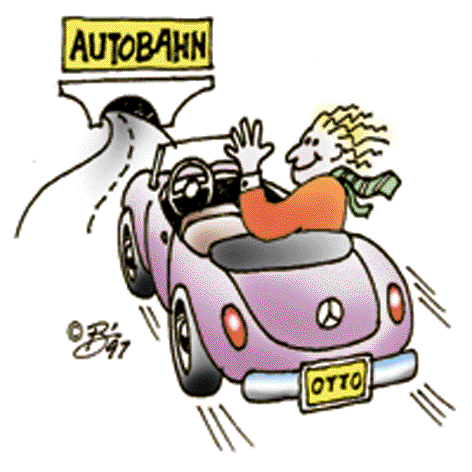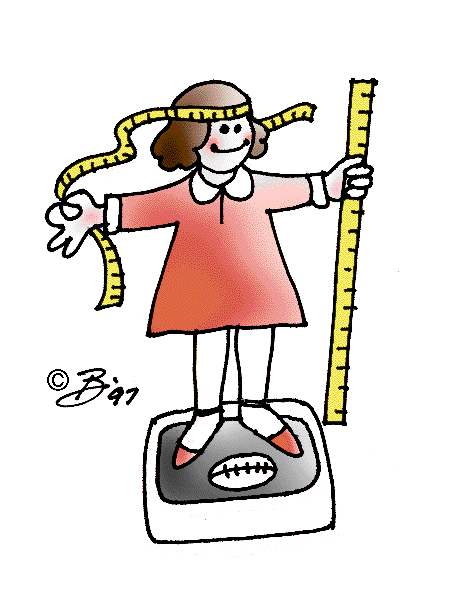|
|||
| Technology at a Glance is a quarterly newsletter from the National Institute of Standards and Technology reporting on research results, funding programs, and manufacturing extension and technology services. If you have comments or general questions about this newsletter or if you would like to receive the four-page, color newsletter in hard copy, please email your mailing address to Gail Porter, editor or call (301) 975-3392. About Technology at a Glance. | |||
In this Issue . . .Articles: |
Shorts: An Autopilot for Autos Helping Police Lock Up Drunk Drivers Cone Improves Display Measurements Kid-Sized Data Goes Online Co-op Corner: |
||
Seamless Splicing of HDTV Signals |
|||
| Researchers led by the David Sarnoff Research
Center, Princeton, N.J., have demonstrated the first seamless splicing of compressed
digital video signals used in the new high-definition television (HDTV) systems that are
expected to be publicly available late next year. Seamless splicing was developed by a joint team of nine leading computer, communications, and broadcast companies headed by Sarnoff and co-funded by the NIST Advanced Technology Program. The equipment was designed and built by Philips Research, Briarcliff Manor, N.Y. HDTV video, which is at least six times more detailed than conventional U.S. TV pictures, is mathematically "compressed" for transmission at the source and uncompressed by the HDTV receiver. Each time the video is compressed, it is degraded slightly--information is lost by the process. Intermediate TV studios, therefore, try to work with compressed signals as much as possible, but this requires new tools to accomplish tasks that stations are used to doing with conventional video. Splicing--to insert local programming or commercials, for example--is one such key task. Previous attempts at compressed digital splicing required momentary flickers of black between segments, but the new technique allows the smooth, seamless transitions viewers expect. Contact: William Shumann, (609) 734-3038. |
|||
 Optical 'Tweezers' Measure StickinessCells stick together, viruses stick to cells, and white blood cells stick to invading organisms. The sticking of one body to another is what makes much of biology work. Now researchers at NIST and Harvard University have developed a new measurement technique to evaluate the "stickiness" of cells and viruses. Using two optical "tweezers" to hold a red blood cell and a virus-coated microsphere, the researchers created controlled collisions to study adhesion between cells and viruses. Optical tweezers were developed at Bell Labs in the 1980s, but this new research marks the first time they have been used for this type of measurement. The method relies on the fact that light waves exert minute forces as well as transmitting energy. If an object is small enough--in this case about 5 micrometers across--it can be "trapped" or held still by a focused beam of laser light. When the laser's position changes, the trapped object moves too. The researchers recently used their new method to evaluate the effectiveness of highly potent viral inhibitors. These are potential medicines being developed to prevent viruses from sticking to cells, thereby preventing infection. Optical tweezers were used to hold a blood cell stationary while another set of tweezers moved a microsphere covered with virus particles into a collision with the cell. Both the cell and the microsphere were immersed in a solution containing a viral inhibitor. High concentrations of inhibitor prevented adhesion of the sphere to the cell. Lower concentrations allowed the two to stick together. The new technique allows researchers to make measurements not possible with conventional methods and should make it easier to judge the effectiveness of inhibitors and other medicines at a variety of concentrations. Contact: Kristian Helmerson, (301) 975-4266
or George Whitesides, (617)
495-9430. |
|||
Software Tool Kit Builds 3-D Worlds |
|||
| Graphic by Aesthetic Solutions | |||
 A new tool kit of software components under development by Aesthetic
Solutions, Aliso Vieja, Calif., may cut dramatically the time required for building
virtual reality environments, thereby making the technology accessible to a much wider
array of users. A new tool kit of software components under development by Aesthetic
Solutions, Aliso Vieja, Calif., may cut dramatically the time required for building
virtual reality environments, thereby making the technology accessible to a much wider
array of users. The tiny, six-person company received a cost-shared NIST Advanced Technology Program award in 1995 to develop component-based software for virtual reality applications. Virtual reality is a powerful technology that allows a computer user with special "data gloves," an imaging headset, or even an ordinary computer mouse to be immersed in a simulated world. It has broad-ranging applications in entertainment, education, medicine, advertising, and business. Aesthetic Solutions' tool kit will include extensive libraries of three-dimensional graphics-based components including terrains, characters, buildings, vehicles, and props that users can quickly "drag and drop" into their own simulated world. Many of these components will have "brains," making them capable of executing "behaviors" like obeying the laws of physics, making decisions, and interacting with other components and users. Balls bounce. Characters run. Tanks explode when struck by missiles. If you prefer an alien world, gravity can be turned off or even reversed. With the ability to select components in any combination without the laborious job of programming each object's behavior, the company's tool kit is expected to allow non-technical users to create complete three-dimensional web sites in a matter of hours. Using knowledge gained in part through its ATP R&D project, the company will use its own funds to develop an initial software product by the end of 1997. Contact: Nolan Tamashiro, (714) 597-4994. |
|||
The Other DNA: New Biotech Tool |
|||
| Drawing by Welsh Design | |||
 Most people don't realize it, but their identity is determined by two sets
of DNA, not one. Most people don't realize it, but their identity is determined by two sets
of DNA, not one. The DNA found in the chromosomes located in the cell nucleus is well known. But everyone also has a separate, much shorter strand of DNA inherited only from their mother. This maternal DNA is located in the cell's mitochondria, often called the cell's powerhouses because their function is to convert nutrients into energy. As scientists search for better, faster ways to identify people for forensic or paternity cases, and as doctors look for clues to genetically linked diseases, mitochondrial DNA has become a hot research topic. A single cell can contain thousands of mitochondria, consequently mitochondrial DNA is often available in forensic evidence samples even when nuclear DNA has degraded. In addition, more than 10 different genetically linked diseases, such as Alzheimer's, are associated with mutations in specific locations along the mitochondria's circular DNA strand. (See above diagram of cell, sausage-shaped mitochondrion, blue strand of DNA, and white areas linked to specific diseases.) NIST researchers are working to help speed this research along by creating a mitochondrial DNA Standard Reference Material. The new SRM will include mitochondrial DNA from at least two different people. The DNA strands have been characterized carefully. DNA can be thought of as a very long, twisted zipper. Each "tooth" in the zipper represents one of four bases, and each base will match up only with its complementary mate. NIST researchers have designed 58 sets of unique "primers," which together will allow the entire strand of mitochondrial DNA to be sequenced. This means the SRM allows an investigator to identify in order all 16,569 base pairs or "teeth" in a mitochondrial DNA strand. Researchers whose analyses of the base pair sequences in any or all of the 58 different sections in the SRM DNA match the sequence provided by NIST can be assured that their analyses of unknown DNA sequences also are being conducted properly. NIST expects the SRM to be useful to the forensic, medical, and toxicology communities. The SRM is planned to be available later in 1997. Contact: Barbara C. Levin, (301) 975-6682 |
|||
MEP Network Now NationwideNIST's Manufacturing Extension Partnership now has manufacturing extension centers in all 50 states and Puerto Rico. Over the last four years, MEP has grown from a pilot program operating in seven states to a cohesive nationwide network putting hands-on technical and business assistance within reach of all of the nation's 381,000 smaller manufacturers.For example, the Chicago Manufacturing Center recently helped Dynacircuits Manufacturing Co., Franklin Park, Ill., to achieve QS 9000 certification. QS 9000 is a stringent quality certification process designed especially for automotive equipment manufacturers. To help more companies become familiar with MEP services, local affiliates of the program are offering free two-hour assessments to qualified smaller manufacturers at 13 trade shows this year. Smaller manufacturers who qualify for this offer will be visited by a field engineer from their local center who will discuss the company's current technology and business operations and needs. For a list of the places and dates of trade shows where MEP will be exhibiting, contact
MEP program, (301) 975-5020. |
|||
Wulffman Draws Crystal Shapes |
|||
 It's here. It's free. It's easy to use, and it's on the Web. It's Wulffman. Wulffman is an interactive computer program for drawing crystal shapes. Produced by NIST materials researchers, the program is designed to help scientists quickly visualize three-dimensional faceted crystals and "quasicrystals." The program gets its distinctive name from the term "Wulff shape," known to materials scientists as the crystal shape that an element or combination of elements tends to form because it requires the least amount of surface energy. Given a crystal's symmetry and surface energies for specific crystal planes, Wulffman constructs an image of the crystal's Wulff shape, which then can be manipulated with Geomview. Geomview is a free 3-D visualization program available from the University of Minnesota. The NIST researchers hope the program will be useful for designing new materials where crystal shapes affect the material's bulk properties; a major company already is using it to help design reflective paint. It also should be useful as a teaching tool. The program is designed to run on Unix workstations. For further information and to download the program, visit the Wulffman website at http://www.ctcms.nist.gov/~ryan/wulffman. Contact: Andrew Roosen, (301) 975-6166 |
|||
CorrectionsOur apologies for two errors in the Fall 1996 issue: The NIST radio station WWVB is not expected to begin transmitting a boosted time signal until September 1997; the British research vessel James Clark Ross was incorrectly identified as the James Clark Roth. |
|||
 An Autopilot for AutosFasten your seatbelts, surrender the steering wheel, and let AUTONAV do the driving for you--on streets and highways or over unpaved terrain. Those are the kind of automated driving and--in the case of the military--driver-free reconnaissance capabilities motivating work recently begun by a team of German and U.S. researchers. The collaborators aim to develop a "next generation autonomous vehicle navigation control system." Under an agreement between the U.S. Department of Defense and the German Ministry of Defense, NIST, the Army Research Laboratory, and the David Sarnoff Research Center will be exchanging technology with counterparts from Germany's University of Bundeswehr and Dornier GmbH, a unit of Daimler-Benz, the German automotive and aerospace company. NIST's contributions include its real-time control system architecture, reference-model framework for defining, integrating, and organizing the many interacting software and hardware elements of a control system. German technologies have been demonstrated in self-guided vans and passenger cars that have logged thousands of kilometers on the German autobahn. AUTONAV's goals are to extend the performance and capabilities of these technologies, incorporate and evaluate new ones, and, ultimately, develop a standard platform that manufacturers can use as the basis for the robotic or semi-automated vehicles of the future.Contact: Maris Juberts, (301) 975-3424 |
|||
Helping Police Lock Up Drunk DriversA new standard from NIST might help make 1997 a good year for police and a bad year for drunk drivers. Crime labs can purchase an updated and revised Standard Reference Material from NIST to assess the accuracy of breath and blood alcohol tests. The SRM allows labs to calibrate their analysis instruments with a standard of known concentration, improving the accuracy of the test and helping to ensure that the lab results will stand up in court. NIST issued its first standard for assessing the accuracy of breathalizer and blood alcohol concentration tests in 1985. Newly issued, Standard Reference Material 1828a (Ethanol in Water Solutions) will assess the accuracy of breath and blood alcohol measurements over the wide range of legal limits used by federal and state law enforcers. Medical laboratories can use this SRM for checking the accuracy of medically necessary blood alcohol tests. In addition, the food industry has found SRM 1828a useful in determining the alcohol content of foods.Contact: Jennifer Colbert, (301)
975-2579 |
|||
Cone Improves Display MeasurementsHow black is black? The answer is critical to judging the quality of a wide range of electronic displays, especially the newer, high-contrast flat-panel displays used in laptop computers, aircraft cockpits, and other applications. NIST researchers have developed a simple technique that substantially improves the accuracy of measurements of contrast ratio--the difference in brightness between a display's black areas and its white areas. The technique uses an open-ended, glossy black cone to shield the lens of the light-measuring equipment from glare and minimize reflections of light back onto the surface of the display. Without the cone, measurements of black areas are corrupted by reflections from the lighter areas surrounding them. This is particularly true for newer displays with contrast-enhancing features, leading to problems in fairly comparing the quality of different brands or technologies. A display measured with conventional techniques produced a contrast ratio of 50 to 1, while the same display measured with the new NIST method produced a much more accurate ratio of 250 to 1. The Video Electronics Standards Association will vote later this year on whether to adopt a new flat-panel display measurement standard that includes the NIST developed technique.Contact: Paul Boynton, (301) 975-3014 |
|||
 Kid-Sized Data Goes OnlineSay you are starting a small business designing bicycle helmets for children, and you want to know the range of sizes to make for young cyclists. You have spent hours searching the Internet for some electronic data to plug into your computer-aided design software, to no avail. Now, your search is over. Body measurement data gathered for a 1975 Consumer Product Safety Commission study entitled "Physical Characteristics of Children" now are available on a World Wide Web site called AnthroKids, which can be found at http://www.nist.gov/itl/div894/ovrt/projects/anthrokids/. This information, the only public domain electronic database of child anthropometric data, should prove to be a valuable resource for product designers of all types who are concerned with the safety of their products when used by children. This resource is due to a cooperative effort between NIST and the CPSC. The two agencies will jointly sponsor a workshop on use of the data on June 24, 1997, in Bethesda, Md. NIST also is working with the University of Pennsylvania to incorporate the data into a software system for three-dimensional modeling of human form and movement.Contact: Sandy Ressler, (301) 975-3549 |
|||
Guide to NIST -- An updated version
of the Guide to NIST, the Institute's "one-stop" information source is now
available. The 164-page volume describes hundreds of different research projects, grants,
industry outreach programs, services, and facilities. Individual items include contact
names, addresses, phone numbers, e-mail addresses, and World Wide Web URLs. A detailed
subject index is included. For a free printed copy, send a self-addressed mailing label to
NIST Public and Business Affairs, A903
Administration Bldg., NIST, Gaithersburg, Md. 20899-0001 or fax requests to (301)
926-1630. An electronic version of the Guide will be available from NIST's home page, http://www.nist.gov. Contact: George Onoda, (301) 975-4489 Contact: Janet Rogers, (303) 497-5114
Contact: Belinda Collins, (301) 975-4000 |
|||
About Technology at a Glance:NIST is an agency of the U.S. Department of Commerce's Technology Administration. NIST promotes U.S. economic growth by working with industry to develop and apply technology, measurements, and standards. Technology at a Glance is produced by Public and Business Affairs, A903 Administration Bldg., NIST, Gaithersburg, Md. 20899-0001. Any mention of commercial products is for information only; it does not imply recommendation or endorsement by NIST. Technology at a Glance Editor: Gail Porter, (301) 975-3392, email: gail.porter@nist.gov. For patent information, call (301) 975-3084. |
|||
